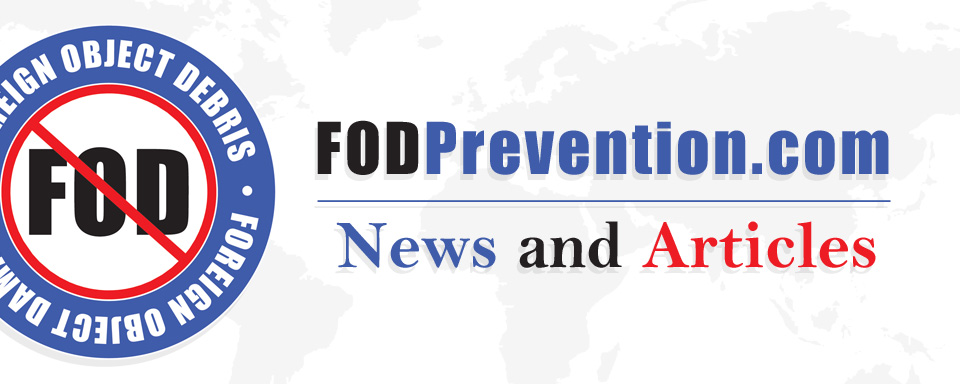Foreign Object Debris Damage: Defining the Way Ahead
by John Sheridan
- January 5, 2015, 3:35 AM
The impacts of foreign object debris (FOD) events and what manufacturers of detection products can do to prevent or ameliorate such events was the focus of this year’s Global FOD Prevention Conference, held at Washington Reagan National Airport on December 2. “We manufacturers already know FOD’s dangers and the capabilities of today’s detection and removal systems,” said Grant Bishop, COO of Singapore-based FOD detection equipment manufacturer Stratech Systems and the architect of the event. “We want to hear more about the wider impacts of FOD events and what more we can do about them.” However, he added, while FOD hazards are readily acknowledged, corrective actions are not the responsibility of a single entity. “Everyone agrees, but no one leads.”
The event included input from stakeholders in several fields: academia, government, insurance and finance.
Professor Edwin Herricks, of Illinois University’s Center of Excellence for Airport Technology, reported that since the Concorde crash at Le Bourget in 2000 (in which the aircraft encountered debris on the runway), just six airports (Vancouver, Heathrow, Singapore, Dubai, Bangkok and Boston) have begun operating FOD detection systems, while a further five (Miami, Hong Kong, Seattle, Doha and Taipei) have systems under way or planned. Despite numerous official U.S. and overseas documents recommending equipage, procurements are slow, technical advances aren’t always incorporated in later requirements, ICAO response times are lengthy and, perhaps of most concern, FOD remains an overhead item in operators’ balance sheets. Critically, there is little information exchange between FOD system operators, little coordination of operational concepts or well defined equipment certification and inspection processes.
As the FAA moves toward reauthorization in the new Congress, staff member Holly Woodruff Lyons made a key observation for the FOD industry. “Funding,” she said, “is never a problem for NextGen,” implying that Congress could be a valuable source of support.
Former Congressman Todd Tiahrt (R-Kan.) agreed, stating that while safety costs money, FOD legislation must be recognized as a financial benefit. However, it needs a “groundswell of support, and a concerted effort to move stakeholders.” Tiahrt strongly endorsed Iain McCreary’s 2010 report Runway Safety: FOD, Birds and the Case for Automated Scanning.
Mark Dombroff of law firm McKenna Long noted that for accounting purposes, United Airlines currently allocates a direct average per-flight cost of $210 for FOD across its entire fleet, to cover actual damage incurred in daily operations. But he pointed out that indirect costs are estimated to be at least 10 times the direct cost, stemming from such factors as maintenance delays, aircraft replacements, weather, de-icing, passenger and crew hotels and so on. An outlier here was Concorde’s unique record of suffering 57 tire failures before its retirement.
There were no average numbers for a comparison with business aviation because of the diversity of its operations, aircraft types, routes and destinations, and operator history. Recognizing that the capital cost of purchasing and installing new technology equipment and its long-term maintenance adds yet another challenge to airport capital budgets and cash flows, Sandy Garrett of The Garrett Group proposed an off-capital budget, public/private investment partnership to cover an airport’s requirements. While enhancing safety, acquisition of a proven FOD system over a seven-year period would also provide an excellent return for investors, Garrett stated.
NTSB acting chairman Christopher Hart weighed in on the FOD issue as well. The loss off the Concorde in 2000 has played a large part in permanently underscoring the NTSB’s philosophy of “maintaining vigilance” in aviation and all other aspects of transportation. He continued, “Unquestionably, the remote monitoring ability of FOD detection systems and similar hazard alerting equipment has brought enhanced safety to all transportation modes, along with the need to continuously revisit the overall economics of earlier, non-automated systems.”
Article Courtesy Of www.ainonline.com


